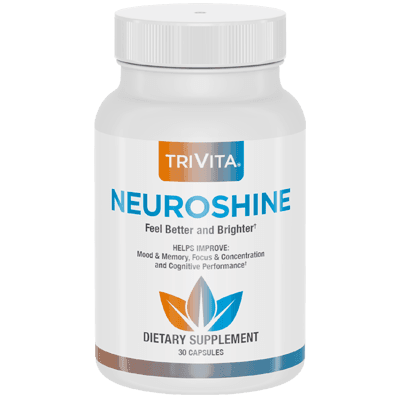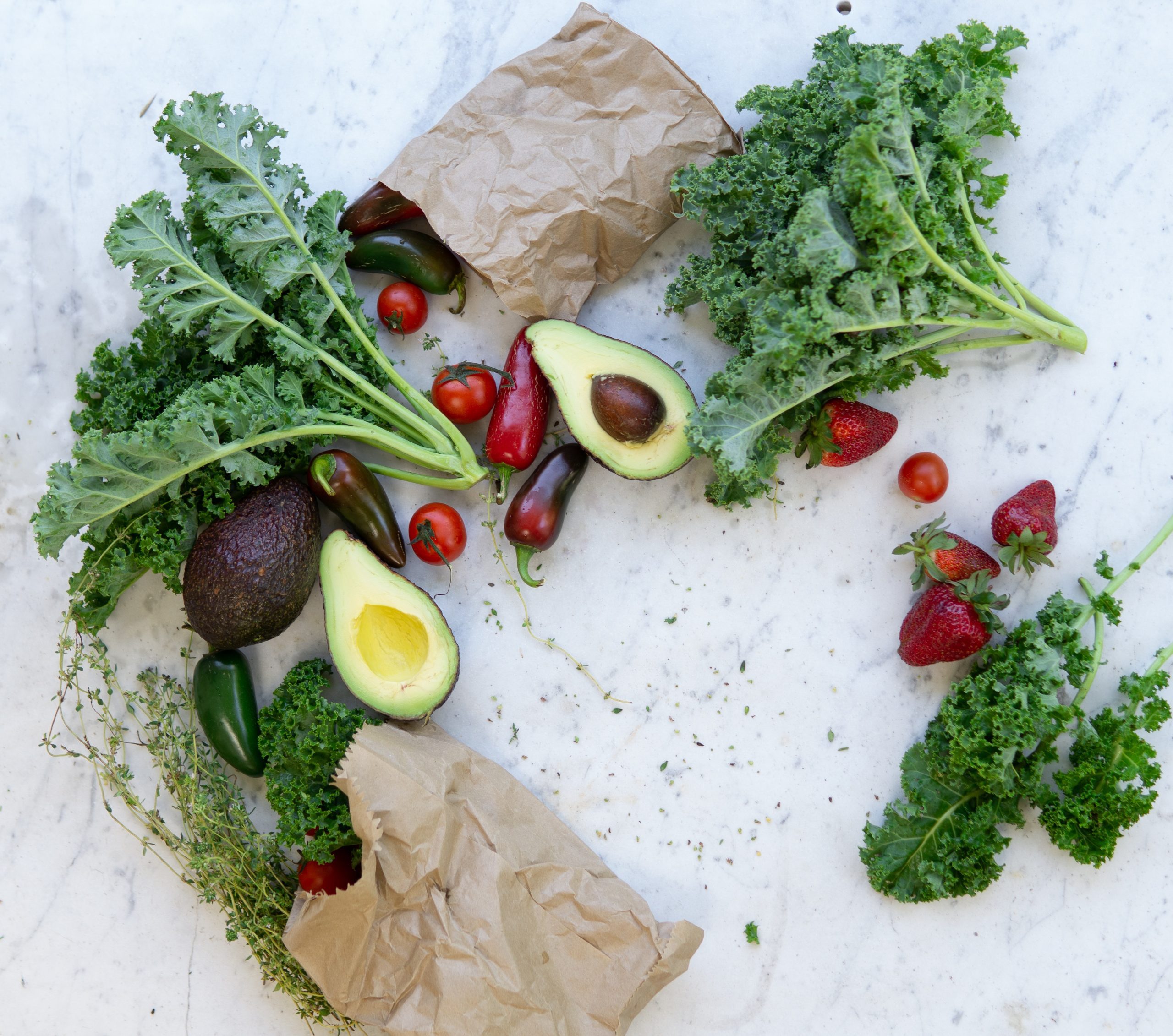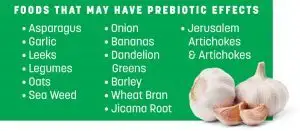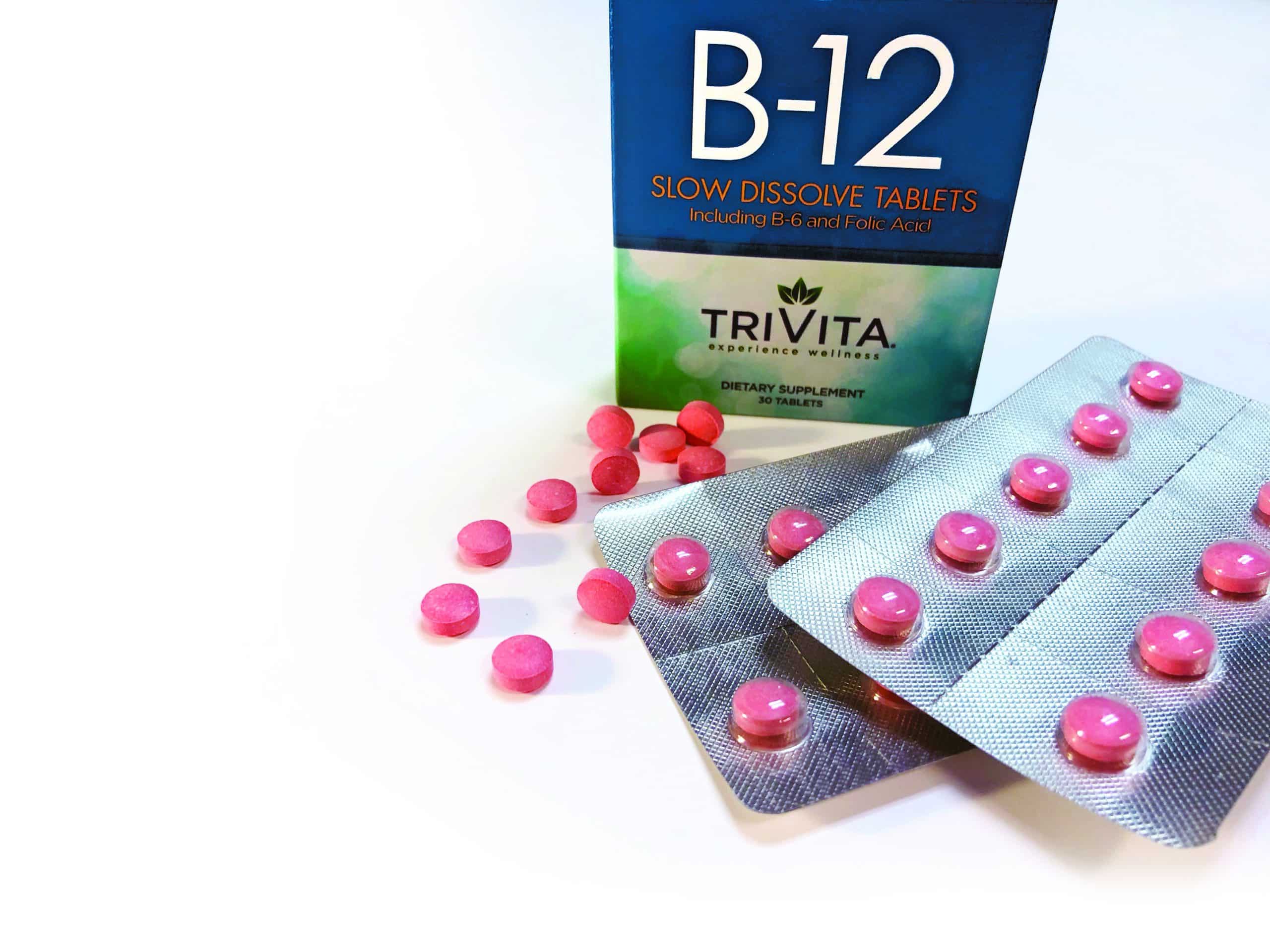Your cart is currently empty!
Blog
-
The Startling Truth About Lithium
There are many misconceptions about Lithium. Many of us only know Lithium in its high-dose pharmaceutical form, and while it is an established treatment for bipolar disorder and other mood disorders, there is more to this abundant element that many of us aren’t familiar with.
Wary of Taking Lithium? Turns Out You Already Are
Lithium belongs to the alkali-metal group which also includes sodium and potassium. This naturally occurring element can be found in groundwater all over the world, including the United States. Lithium is present at low levels in the body and is commonly found in many foods such as vegetables, nuts and seeds, grains, fish and some meat and dairy may also contain this trace mineral.
Lithium Orotate is a specific form of lithium salt that offers the benefits of standard lithium without the potentially harmful side-effects due to its increased bioavailability. In minimal doses, Lithium appears to have medically important and positive impacts on mental health.

Effects of Low-Dose Lithium
In 1990, researchers began looking into the correlation between Lithium levels in drinking water and incidences of violent crimes. The study focused on 27 counties in Texas and found that the rates of suicide, homicide and sexual assault were significantly higher in counties that had little or no Lithium present in the drinking water than in counties whose Lithium levels ranged from 70-170 micrograms/L.1
Nearly 20 years later another study looked at suicide rates and Lithium levels in the 18 municipalities of Oita prefecture in Japan over a five year period. Their findings demonstrated that suicide rates decreased in areas where Lithium levels in drinking water were higher. They found that “even very low Lithium levels may reduce the risk of suicide and that within the levels there is a dose-response relationship.”2
More recently, researchers found that Alzheimer’s patients showed stabilization of cognitive impairment after receiving a microdose of Lithium given over a 15 month period. During the study, the treated group showed no further decline, while the control group showed lower scores on mini-mental state exams.3
These are just a few of the studies conducted that have shown low doses of Lithium positively benefit the brain and mood. The brain is a complex organ, and while scientists have made breakthrough discoveries, there is still more to learn. We do know that simple lifestyle changes can improve your brain health and function and research shows us that adding simple elements such as Lithium can have notable effects.
References:
-

Why You Need NeuroShine™
For every box of NeuroShine, you have a supplement with the combinative power of pantothenic acid, BacoMind and Lithium Orotate. These ingredients are specifically packaged to form a single, yet powerful and confirmed dietary supplement. Each of these ingredients works with each other in amazing and unique ways.BacoMind® (Bacopa Monnieri)
As it supports mood, helps with psychological stress and supports the functioning of the brain including the memory, Bacopa Monnieri, (BacoMind®) has been especially reported to aid adults in cognitive performance. For instance, positive results were recorded in a double-blind placebo; an age-related memory impairment test. BacoMind® was found to enhance the cognitive functions including focus & concentration, and verbal memory1.Pantothenic Acid (Vitamin B5)
Vitamin B5, also called pantothenic acid, has been discovered to play an essential role in the regulation and synthesis of several biochemical pathways. It is popularly known for its energy metabolism and its contribution to the proper functioning of the brain. This vitamin is also required as an important precursor of Coenzyme A category (an essential enzyme for energy and protein metabolism)2.
Lithium Orotate
As scientists continue to study the effects of Lithium Orotate studies have also shown that low doses of lithium consumed has positive benefits on the brain and mood. In fact, one particular study reported communities that had micro amounts of lithium in the drinking water experienced less suicide, homicide and violent crimes versus communities with no lithium in the drinking water3. Another study compared the low environmental dose range of lithium of 300 micrograms to placebo in a group of patients who had Mild Cognitive Impairment, a condition that can deteriorate to Alzheimer’s disease in some who have it. Those given the low dose lithium stabilized and did not lose cognitive function while the group on placebo had continued deterioration4. The research borne out of the environmental findings indicate numerous benefits from lithium at low microgram level of doses.
References: -

Member Spotlight – Joanna Schick
Guided by Hope
Let perseverance be your engine and hope your fuel. – H. Jackson Brown Jr. For many that have struggled with illness or setbacks in life, it may seem as though health and happiness are out of reach. However, hope is about perseverance and perspective. Joanna Schick’s journey to wellness and recovery hasn’t always been easy, but through it all, she kept searching for answers. “I was misdiagnosed for over 20 years. I went from doctor to doctor, and they changed my medications every week. I was like a zombie… When I was trying to find answers to all the pain I was in, I tried everything! But through it all, I learned a lot.” Joanna’s challenges with health began at a young age. As a child, she experienced terrible headaches and suffered three strokes when she was in her twenties. She suffered her first at 22 which left her with burns on her arms after collapsing on a radiator, and her final stroke at the age of 27 left her temporarily paralyzed. “Because I was young all my feeling came back, but that’s when all the doctoring started,” says Joanna. Joanna recounts that she constantly tried to obtain information and resources from anywhere she could, but all she found was drug after drug. After many years of searching for answers and always coming up empty-handed, she requested a particular test from her doctor. It took some convincing, but her doctor finally approved the scan. Little did she know it would change her life forever. The results showed that she had an obstruction that required brain surgery. “After my first brain surgery, I was able to return to school and receive my high school diploma. Because of my grades, it was recommended that I enter college. I didn’t finish college, but I came a long way,” Joanna explains. However, after the operation, she experienced depression, weight gain and developed disordered eating; “I was just lying around all the time, I couldn’t go to work, and my husband was ready to plan my funeral, that’s how bad it was.” But Joanna never stopped looking for answers. In her 40s, she turned to nutrition to help control her weight which is what led her to start researching nutritional supplements and sharing what she was learning with family and friends. After regaining her health and moving to Eureka Springs, Arkansas with her husband Ernie, some of Joanna’s issues returned. Once more, she struggled to find answers before learning she required another operation. Joanna recounts, “They said it was a good thing I came in because I could have died.” It was around this time that Joanna found TriVita’s products. She first read about Nopalea in 2012, and has since taken many other TriVita products. Joanna’s and Ernie’s favorites are CoEnzyme Q-10, Vital C, Cholestria, Vision Guard, Nopalea, MyoHealth and Adaptuit. “I love Adaptuit! I take three ounces before bed, and I sleep like a baby. It’s wonderful and besides it tastes good… I don’t know if there are any products I don’t take!” Looking back Joanna says, “It’s really the nutrition that saved me left and right … I highly recommend all these products!” For Joanna and Ernie health is a priority; “It’s very important for people to be consistent when it comes to nutrition because it pays off. And a little exercise doesn’t hurt.” The couple enjoys staying active with walks, and her husband enjoys working outside. Joanna makes it habit to exercise for 45 minutes a day, she even performs therapy exercises with her 14-year-old dog to keep him healthy! “Our doctors say we’re doing great and we should just continue what we are doing.” Joanna is also passionate about charity work and helping others feel better. “Right now I’m making jewelry for all the volunteers at Good Shepherd Rescue, the local animal rescue, which is over 40 people. We have a tiger rescue here, and I’m working on pieces of jewelry for all their volunteers, too. I also give to all their silent auctions. Plus, I’ve done some jewelry shows at assisted living facilities and the money is always going to charity. At Christmas and Valentine’s Day, we’ve given to residents at some of the assisted living homes because we feel that a lot of them don’t even get a visitor all year. That’s our passion!” Joanna and Ernie are currently planning a family trip to Stuttgart, Germany in August with their son, daughter-in-law and their two children. “We moved to Arkansas because it reminds us of Germany. I went to school in Germany for a while. My mother took me for my grandparents’ golden anniversary. The neighboring town’s school heard about me and invited me, so I went to school there for a year. It’s really a great memory!”
-

Feel Better and Brighter with NeuroShine™
Mood, memory, cognitive function and brain health continue to be some of the most-discussed topics as we grow older. This is due to the fact that research scientists are expanding knowledge in the field of brain health backed by the ever-increasing demand for more natural solutions such as scientifically validated dietary supplements. The brain serves as a go-to-get source for the various functions in our body system such as hearing, taste and smell, vision and the entire body balance. In addition, our brain plays an important role in controlling our behavior, mood and memories. Therefore, it is equally important for our brain to balance this function and research shows that a regular intake of certain dietary supplements in combination with exercise and diet such as the MIND Diet are some of the best ways to support the functioning of the brain and our mood; not only to make us feel brighter and better1 but also healthier. An outbreak of recent nutritional science news with a particular emphasis on mood and brain function reflects the increasing interest in non-drug, natural interventions to help support that our brain is healthy and performs better as we age. Given the present state of our society where senile dementia like Alzheimer’s disease, Depressive disorder and other related variations are of greater concerns, this heightened interest of the populace to find a more effective and natural solution to brain health is timely. Particularly with the soaring costs of health care, increasing rate of Alzheimer, heightened occurrence of Bipolar Disorder (also called Manic Depressive Disorder), and the aging population which places more priorities than ever on changing lifestyle and prevention. Over the years, however, pantothenic acid also called Vitamin B5, BacoMind, a standardized and branded form of Bacopa Monnieri and Lithium Orotate, have been shown to play a major role in brain health function and mood management1,2,3, and these are ingredients that can be integrated into our diets taken as dietary supplements.
A 3-in-1 Supplement for Brain Health and Mood Management
Dietary supplements, and the ingredients from which they are produced, with their bioavailability and level of absorption, provide us with amazing natural product choices that have been clinically confirmed for their effectiveness to improve cognitive functions, manage mood and improve brain functions. From BacoMind and Lithium Orotate to the varieties of natural cognitive supplements that can be derived from the pantothenic acid and other natural sources, individuals are now particularly interested in the effective methods of managing their mood and improving their cognitive function. Many people are increasingly wary of consuming the common prescription pharmaceutical drugs to enhance the proper functioning of the brain, as they are commonly produced from the combination of synthesized materials like amphetamine salts and which can lead to severe health issues like disruption of sleep patterns, anxiety, depression, psychosis, loss of appetite, and death. To meet the demands of the growing population for natural brain health solutions, TriVita is happy to announce the introduction of NeuroShine — a 3-in-1 dietary supplement that helps improve focus and concentration, supports mood, memory function and enhances cognitive performance1,2,3.
References: -

What is Ketosis? Your Guide to the Keto Diet
Get to Know the Keto Diet
Weight loss diets aren’t new. From the Paleo, Vegan and Dukan diets to the well-known Atkins Diet, there are a plethora of modern low-carb diet plans that focus on maximizing health while facilitating weight loss. But in our rush to improve our health and enhance our life, we all too often overlook the one thing we can easily change — our diet. And as we strive to achieve long-term cardio and brain health, nothing holds the potential to have a bigger impact than our diet. The Keto Diet is a low-carb diet that focuses on limiting net carbohydrate intake in order to force the body to use more fats for fuel. High carb diets lead to excess glucose and insulin production. This can lead to several problems. Because glucose is the easiest molecule to convert and use as energy, the body will choose glucose as its primary energy source whenever it’s available. However, with all that glucose present your body needs to produce insulin, a fat storing hormone, to distribute the surplus evenly. With the glucose now being used as a primary energy source, the fats your body would otherwise use as energy are not needed, which means they get stored…as fat. The Keto Diet functions to reverse this process by lowering the intake of carbs, thereby coaxing the body into ketosis, a natural survival technique whereby the body endures on low amounts of food. The Keto Diet gets its name from the ketones we produce while in this state, which are derived from the breakdown of fats in the liver.1 Meal examples:
Meal examples:
- Chicken breast basted in olive oil, with broccoli and cheese.
- Steak topped with a knob of butter and a side of spinach sautéed in olive oil.
KETO DIET BENEFITS
Numerous studies have shown that low-carb diets are extremely helpful when it comes to weight loss, especially for individuals that are overweight or obese.2 Low-carb diets have also been linked to numerous other health benefits, including the reduction of belly fat, a dangerous situation due to the proximity to our vital organs.3 A low-carb diet such as the Keto Diet works by reducing your appetite, and when you’re not hungry, you ingest fewer calories.4 Studies have also shown that low-carb diets may minimize many major disease risk factors, including weight loss to insulin and blood pressure levels.5 Weight Loss By using your body fat as an energy source, the ketogenic diet reduces your insulin levels to turn your body into a fat burning machine.1 Control Blood Sugar Eating fewer carbs naturally lowers your blood sugar. In fact, studies show that the ketogenic diet is a more effective means of preventing diabetes than traditional low-calorie diets.1 Mental Focus Lowering your carb intake not only lowers your blood sugar, it also limits any sugar spikes along with it. As a result, Keto Diet devotees can experience improved focus and concentration. Along with that, studies have shown that the high concentration of fatty acids (the Keto Diet calls for a nutrient intake of 70% fats, 25% protein and 5% carbohydrates), can beneficially impact how our brains function.1 Increased Energy & Normalized Hunger With a better, more reliable energy source fueling your body (fats are the most effective molecule to burn), you’ll feel more energized. As an added bonus, fat is also naturally more satisfying, which leaves you feeling “full” longer.1 Cholesterol & Blood Pressure Compared to low-fat diets, low-carb/high-fat diets show a dramatic increase in HDL and decrease in LDL particle concentration. Low-carb diets have also been shown to treat blood pressure issues — frequently associated with excess weight or obesity — more effectively than other diets.1 Insulin Resistance An abundant amount of research shows that a low carb diet can lead to lower insulin levels, thereby helping many people avoid contracting type II diabetes. However, it’s equally important to realize that even people who exercise regularly can benefit from the insulin optimizing properties of many high omega-3 fatty acid foods found in the Keto Diet.1 What to Eat
What to Eat
- Meats – fish, beef, lamb, poultry, eggs, etc.
- Leafy Greens – spinach, kale, etc.
- Above Ground Vegetables – broccoli, cauliflower, etc
- High Fat Dairy – hard cheeses, high fat cream, butter, etc.
- Nuts and Seeds – macadamias, walnuts, sunflower seeds, etc.
- Avocado and Berries – raspberries, blackberries, and other low glycemic impact berries
- Sweeteners – stevia, erythritol, monk fruit, and other low-carb sweeteners
- Other Fats – coconut oil, high-fat salad dressing, saturated fats, etc.1
- Grains – wheat, corn, rice, cereal, etc.
- Sugar – honey, agave, maple syrup, etc.
- Fruit – apples, bananas, oranges, etc.
- Tubers – potato, yams, etc.1
THE IMPORTANCE OF KETOGENIC AMINO ACIDS
Essential Amino acids are the cellular building blocks of protein.6 There are 20 primary amino acids in your body’s proteins, 9 of which are essential to your diet because your cells can’t manufacture them. By contrast, your body can produce enough non-essential amino acids to meet its needs.7 Glucogenic and Ketogenic Amino Acids Amino acids can also be classified as glucogenic, ketogenic or glucogenic-ketogenic depending on how they are metabolized. As it does with carbohydrates and fats, your body metabolizes the amino acids in proteins to derive energy. Glucogenic amino acids yield glucose for energy production, while ketogenic amino acids like lysine and leucine are converted into ketone bodies via ketogenesis. Ketone bodies provide an alternative fuel source when glucose, the body’s preferred energy source, is unavailable.8How to Reach Ketosis
- Limit your carbs
- Limit your proteins
- Don’t worry about fat intake
- Drink plenty of water
- Stop snacking
- Start fasting
- Exercise
- Start supplementing1 with Omega3 Prime and MyoHealth Essential Amino Acid complex from TriVita
References- http://www.ruled.me/guide-keto-diet/
- http://www.ncbi.nlm.nih.gov/pubmed/19082851
- http://www.ncbi.nlm.nih.gov/pubmed/15533250
- http://www.ncbi.nlm.nih.gov/pubmed/17228046
- http://www.ncbi.nlm.nih.gov/books/NBK11795/
- Robert Wolfe, Essential Amino Acid Solutions for Everyone (unpublished, 2016), 29
- http://healthyeating.sfgate.com/many-amino-acids-body-require-6412.html
- http://healthyeating.sfgate.com/ketogenic-amino-acids-9147.html
-

Member Spotlight – Helen Swanson
KEEP ON, KEEPING ON Helen Swanson has lived in numerous cities and towns throughout the Midwest, and everywhere she goes she brings with her a keen sense of service. “I’ve always tried to help people and to have a servant’s heart. That’s just what I do because you never know what tomorrow’s going to bring. There are a lot of people my age with pretty severe physical problems who’re really struggling, and I try to do whatever I can to help.” In fact, several months ago she found herself trying to break up a fight in front of a bank. “It happened right in front of me—I couldn’t just ignore it. One of the men had his glasses knocked off, and they landed right by my car, so I got out of my car, grabbed the glasses and told those two to knock it off.” In other words, this is a woman who stands on principle. “I was born in Joliet, Illinois but we moved to South Bend, Indiana when I was six months old, so that’s where I call home. As you might guess, I’m a huge Notre Dame fan. My other love is babies. I’m planning to volunteer at the local YMCA daycare because I just love being around them so much. When I’m out, and I see babies, I almost have a fit.” After growing up in Indiana, Helen got a job as a teletype operator and load planner for United Airlines right out of high school in 1957. “This was back in the days of prop planes, and I was in charge of weighing each to make sure they got off the ground. Four years later I got married, and in 1965 my husband and I moved to Sandusky, Ohio. He was with a freight company, so we moved quite a bit; first to Marshall, Michigan in 1969, then to New Berlin, Wisconsin in 1972 and finally to Hermitage, Tennessee right outside of Nashville in 1973.” “While we were in Tennessee, I went through nurses training, and after we were divorced in 1975, I ended up moving back to South Bend in the late 70s with my son and daughter and working almost 20 years as an LPN on a medical surgery floor. It was a small hospital, but we really provided great care. By 1998 my daughter was married with a family and career of her own, and I moved to Pennsylvania to help care for my grandchildren.” “These days I live in New Hope, Minnesota, a suburb of Minneapolis, where I’ve been for 12 years—the last 10 in an independent senior living facility. When I first moved here, I worked for two home care agencies as a nursing coordinator. That was right about the time I became a TriVita customer. I was working late one night, and I heard James Robison on TV talking about Super B-12, so I ordered a box. Well, I felt an immediate difference in my energy and my mood right from the start—and I still do. Ever since then, the first thing I do when I get up is drink a tall glass of water and take a B-12 tablet. I can’t imagine being without it.” “I have had my share of health problems, including breast cancer, and for many years I had extremely high blood pressure, too. At one time I was on about six different medications for that alone, and in 2009 I was put in the hospital when my numbers hit 265 over 120. But the doctors took out my adrenal glands, and now I’m down to one blood pressure medication a day, which helps because I’m very sensitive to medicine. “I currently take VisionGuard and Omega3 Prime, but last August I also started taking MyoHealth, and there’s no way to explain how it has made me feel. I have a herniated disc in my back that was very uncomfortable, and now I can do almost anything I want pain free. There’s none in my back, none in my hips, and none in my knees. Plus, within two days it killed my appetite, and I’ve lost 18 pounds! It’s just an absolutely wonderful product. Sometimes I take it in the morning and sometimes in the afternoon as well for an energy boost. If somebody had to take everything away from me, they couldn’t take my B-12 or MyoHealth.”
-

Member Spotlight – Rosemary Cegles
In “To a Mouse, on Turning Her Up in Her Nest With the Plough,” the Scottish poet Robert Burns writes: The best laid schemes o’ mice an’ men Gang aft agley (Go often askew) Indeed, as many of us have undoubtedly experienced, life doesn’t always turn out the way we once envisioned it. However, if we’re lucky, sometimes the alternate scenario is even better. Rosemary Cegles grew up in Niagara Falls, New York dreaming of sunshine and the ocean, so after finishing high school she made plans to take off for California. Lacking sufficient funds to finance the entire cross-country journey, she decided to stay with her travel companion’s brother in Chicago, get a summer job and supplement her savings before setting off again in the fall. But somewhere around this time Mr. Burns’ sage couplet once again played out. As Rosemary herself cheerfully recounts, “I never made it to California, because five months later I married the brother. And here we are today, still together and still going strong.” For the next six years, Rosemary and her new husband, Paul, lived in Chicago before moving to suburban Westmont and building their first house. They later relocated to nearby Naperville and now reside in Plainfield, Illinois. Rosemary spent most of her career working with and advocating for homeless people in DuPage County, providing clothing, counseling, and meals for indigent people. While very rewarding, the position was also difficult, and during this time Rosemary began dabbling in floral design as a creative outlet. Later, after returning to school, she began a second career as a professional floral designer. “My husband Paul started off in the early days of Information Technology with Aamco before switching careers and becoming a community service officer for the Naperville Police. He also volunteered for a number of years with Little Friends, a Naperville organization that serves the handicapped. And if you’re a movie fan, you might have seen him on screen, as he’s appeared as an extra in a number of movies, including Home Alone and The Babe.” “Wherever we’ve been and whatever we’ve been doing, we’ve always tried to live a wholesome lifestyle, eating healthy, exercising…the whole thing. And TriVita has been a big part of that. We first heard about TriVita after Paul saw one of your B-12 ads in 2004, and ever since we’ve gotten the catalog and built from there. In fact, my morning regimen relies heavily on TriVita, and I’ve even got my son going on it now. (We have 3 children and 9 grandchildren, and they all ask us about vitamins.”) “I take four bottles of water with me to work every day: two bottles of Vital C™, one bottle of Nopalea™ Daily Cleanse, and one bottle of MyoHealth Lemonade Powder. We just started taking MyoHealth recently — I start my morning with a MyoHealth Protein Shake — and it’s definitely made a difference we both can feel. The other day one of our clients at the floral shop was talking about how tired she gets and I mentioned my daily regimen. Well, my boss overheard us and piped in, ‘Do whatever she tells you to do. She’s never sick and she runs circles around us.’” Rosemary and Paul also list B-12, CoEnzyme Q10, Omega3 Prime™, Essential D™, MyFloraDaily Prebiotic and Probiotic, Promeric 95, Bone Growth Factor™, VisionGuard™ and EnergyNow! among their favorite TriVita products. “We also take Nopalea™ and Adaptuit™, which certainly gives me a sense of calm, especially during the holidays. It probably would be easier to discuss what we don’t take, but everything works!” And how. After a recent trip to the cardiologist, Rosemary’s doctor couldn’t believe the numbers he saw on her blood work. “He left the office, came back and just kinda looked at me before telling me that he’d never seen the good HDL at 128. So then I started telling him about my regimen.” “I’m not naïve about vitamins and supplements. I’ve been taking them for a long time and I’ve done a lot of research, and I trust TriVita because of the high-quality ingredients you use. And when you follow the usage directions, TriVita products do what they say they’ll do.” “The proof is in the pudding. We’ve been taking TriVita supplements for years and I feel great, and any symptoms Paul once had are now gone. I have a lot of energy and I’m up and down ladders and on my hands and knees most days. We both feel very blessed by TriVita.”
-

Muscle Structure & Unrealistic Expectations
The idea of building muscle isn’t as simple as it ought to be.
Some, of course, simply believe in a slimmer and leaner interpretation of peak physical health. Others more or less believe that the more “built” they are, the healthier they’ll be. The truth, insofar as there is one, is somewhere in between. Healthy muscles matter and that means proper exercise and nutrition without neglect, and without going too far overboard. One of the issues that keeps a lot of people focused on big muscles rather than healthy ones is that we are continually shown partially or entirely unrealistic examples of muscular ideals. Perhaps most of all, and for men specifically, this happens in film. It is almost a rite of passage at this point for Hollywood actors to take roles for which they have to “bulk up” for several months. Some of the most prominent examples are in historical epics like Troy, for which Brad Pitt quite literally looked like a demigod, and 300, which garnered so much attention for its actors’ abs that it spawned its own workouts. There have also been plenty of examples in other action and superhero movies, as well as in sports dramas. It sometimes seems as if every actor in Hollywood takes a swing at a boxing movie for the purpose of bulking up. Jacke Gyllenhaal is one of the most recent examples and was almost unrecognizable as boxer Billy Hope in Southpaw. We see examples like these and aspire to look the same as the actors – forgetting, of course, that they’re paid millions to focus intently on fitness for months at a time, and with excellent professional support. By extension, we sometimes see the same actors, or at least versions of the same characters, appearing in video games. There, if anything, musculature can be even more abnormally impressive. And these games can be somewhat difficult to escape if you’re a fan of gaming at all. You don’t need to go out and buy the brand new Marvel vs. Capcom: Infinite console game to see superheroes in all their buff, 3D glory. Marvel and DC heroes alike are all over internet and mobile games as well. Playing options at prominent slot sites include big-name DC Comic heroes’ games, which use images of popular characters as symbols and backdrops. Essentially, no matter where you play, be it in a 3D fighting game or a simple browser-based slot or arcade, you can see the same bulging muscles that represent an unrealistic ideal. Fiction aside, we also see a lot of incredible examples of nearly unrealistic muscle structures in the sports many of us know and love. There are almost too many examples to go through, but to choose someone at the height of physical fitness, we’ll consider LeBron James. Approaching 33 years of age, James is an athlete every bit as physically imposing as some of the movie heroes listed above, if not more so. He towers over the average man, seems not to have an ounce of fat on his body, and has arms that bulge like they were drawn by a comic book artist. Just remember this: his fitness reportedly comes at a price of about $1.5 million a year! Having large muscles is terrific, and if you have the time and know-how, you may even approximate the look of some of these figures more closely than most. But if you’re concerned with muscle health, it’s always important to remember that some of our societal ideals are based on extreme, almost unattainable examples. It’s best to focus on health before pure bulk, and to focus your efforts on your own physique without idolizing that of an actor, athlete, or character.
-

Regain Your Muscle Strength with Help from a NASA Study
Looking to enhance the health of astronauts in space, in 2001 NASA commissioned a bed rest study that 16 years later could pay dividends by improving your muscle strength and function! The risk of extreme muscle loss presents severe limitations for space exploration. In fact, when the body is exposed to zero gravity environments for an extended period, muscles become weak and deteriorate. But muscle loss does not only affect astronauts. As we age, the rate of muscle atrophy increases, especially among older individuals with limited mobility or those that are routinely on bed rest. In the study, elderly individuals confined to bed rest for as little as 10 days actually experienced greater muscle loss than younger patients that were immobile for 30 days. However, there is hope! In this short video, Dr. Robert Wolfe explains the results of the NASA bed rest study and what you can do to prevent further loss of strength and help build new lean muscle at any age!
-

No Time to Exercise? Here’s how to make the most of your workout!
Did you know that MyoHealth amplifies the effects of exercise which will help you to get in shape and get results faster! This means that you can get better results with LESS effort. It’s all about working smarter not harder. MyoHealth is the only US patented blend of all 9 essential amino acids. Taking MyoHealth before and after exercise helps the muscle to repair and recover faster which gets you the results that you want faster!So how does it work?
Amino acids are the cellular building blocks of protein in your body. There are 20 primary amino acids in your body’s proteins, 9 of which are essential to your diet because your cells cannot manufacture them. These amino acids (histidine, isoleucine, leucine, lysine, methionine, phenylalanine, threonine, valine, and tryptophan) are known as Essential Amino Acids. MyoHealth Essential Amino Acid Complex line is the only US patented product to give you all 9 Essential Amino Acids (EAAs) clinically proven to support muscle strength and function. Developed over 20 years based on findings from NASA, National Institutes of Health (NIH) and 25 clinical trials led by renowned amino acid, nutrition and muscle metabolism expert Dr. Robert Wolfe, MyoHealth is the first and only EAA complex to receive a US patent for its unique, highly-effective formulation. What can MyoHealth do for you? It’s clinically proven to:- Provide the EAA’s you need that the body cannot produce on its own
- Synthesize protein more efficiently and effectively
- Help build lean muscle mass faster at any age
- Increase metabolism
-

5 Best Workout Motivation Tips
Some days it can be tough to get motivated to workout.
It’s so easy to tell yourself – I’ll do it tomorrow, but that’s a slippery slope! With our busy schedules and never ending to-do lists, working out is sometimes the last thing you want to do! Here are the 5 best workout motivation tips to get you up and active and actually excited to work out!1. Do it for the view!
Find a fun place that has interesting scenery and take photos as you enjoy activity. It could be a walk in the park, where you notice the intricate flowers, or a sunset jog where the sky changes by the moment. Take the time to really savor the experience of being in the moment and appreciating your surroundings. This beats a boring cardio session on the treadmill any day!!2. Make it fun!
What activities did you used to enjoy as a child? Notice how children run around and play and how excited they are to do their favorite activities. Relive that childhood spirit by doing the activities that you used to enjoy – it could be taking a ballet class, or riding horses again. What about riding a bike or exploring trails in the forest? Cross country skiing, golfing or tennis, choose something that used to get you excited and get going!3. Listen to a good book!
You can listen to most of your favorite books or podcasts while you go for a walk or run or bike… this can be more stimulating than listening to music, and you can learn something too while you’re enjoying your favorite activity! If you get really wrapped up in a book you might even want to extend your fitness time longer to listen to more of the audio!4. Make it social!
Combine your social time with fitness – instead of meeting a friend for a coffee – get out for a walk together. Try a game of golf instead of going to a movie. Get creative with ways that you can enjoy time with friends and family AND get your fitness in too.5. Find the time!
Take 10 minutes and do a quickie interval workout. Don’t feel like you need to spend an hour in the gym. Even just taking 10 minutes and doing a combination of movements can be effective at reaching your goals. Try alternating two (or more!) movements throughout the 10 minutes, alternating every 30 seconds. For example : 30 seconds of pushups, 30 seconds of jumping jacks, 30 seconds of squats, repeating for 10 minutes. -

4 Ways to Ease Inflammation (That You’ve Probably Never Heard Of!)
Inflammation is a hot topic, and for good reason! An inflamed body can show up as so many health conditions: an achy body, weight gain, low energy and even aging faster!1
Here are 4 sneaky ways that you can help to ease and even prevent inflammation:Ban Electronics From The Bedroom
Gadgets are a part of everyday life, and we can’t live without them. But if you bring them into your bedroom, this is an open invitation to bring inflammation into your life. The light from the screen of a TV or smartphone can throw off your body’s internal clock. This makes getting a good night’s sleep next to impossible. Even if the screens are turned off, the tiny blinking notification or power lights can be sensed by the photoreceptors in your skin!2 Poor sleep leads to an increase in inflammation.3No Sweetened Beverages
Stay away from sweetened drinks! It doesn’t matter if it’s diet or regular. People who drink beverages that are sweetened with high-fructose corn syrup or artificial sweeteners often have higher levels of insulin in the body4. Therefore, this can cause more inflammation.5Avoid AnyY Artificially Colored Foods Or Drinks
Check your food labels for any ingredients that you can’t pronounce—they’re usually full of inflammatory substances. Also, avoid any artificially colored foods and drinks. Unless they contain blueberries, a bright blue food isn’t likely to do anything good for your immune system! A weak immune system is associated with higher levels of inflammation in the body.6Drink Green Tea
Green tea has natural ingredients called polyphenols. They help the body detoxify and also fight free radicals which are a cause of inflammation in the body7. Try to drink 1 -3 cups of green tea daily!
Sources:- http://onlinelibrary.wiley.com/doi/10.1196/annals.1322.001/full
- https://academic.oup.com/jcem/article-lookup/doi/10.1210/jc.2004-0957#61568045
- https://academic.oup.com/sleep/article/32/2/200/3741730/Sleep-Duration-and-Biomarkers-of-Inflammation#main
- https://www.health.harvard.edu/blog/is-fructose-bad-for-you-201104262425
- http://www.todaysdietitian.com/newarchives/020314p44.shtml
- http://www.todaysdietitian.com/newarchives/020314p44.shtml
- http://www.ingentaconnect.com/content/ben/chddt/2007/00000007/00000002/art00008
-

The Benefits of Fish Oil
How adding fish oil to your diet can help
All saturated and monosaturated fats can be made by the body and do not need to be supplied through the diet. However, the body is unable to make two types of polyunsaturated fatty acids (PUFA) that have been shown to have much beneficial health effects1:- Alpha-linolenic acid (Omega-3) found in flaxseed, flax oil, spinach, broccoli
- Linoleic acid (Omega-6) found in soy oil, sesame seeds, corn oil, and most nuts
Brain and Nerve Health Support2,3
- Approximately two-thirds of the human brain is made of fat
- Omega-3 fatty acids EPA and DHA are among the most important brain health nutrients
- DHA is the primary structural component of the brain
- Omega-3 and Omega-6 PUFAs constitute 30-35% of total brain fatty acids
- DHA levels decrease with age and are affected by the number of fatty acids in the diet
Vision Support4,5
- DHA is also critical for the development and function of the retina
Healthy Heart5,6
Omega-3 EPA/DHA:- May decrease triglyceride levels in plasma as well as the level of total and LDL (bad) cholesterol
- May normalize blood pressure by helping to increase and decrease levels of compounds that may result in blood vessel relaxation
Are Americans meeting nutritional guidelines for Omega-3 fatty acids? 7
- The 2010 Dietary Guidelines for Americans recommend consuming 250 mg/day of Omega-3 fatty acids (two 4 oz. servings of seafood/week)
Premium Fish Oil in an Easy-to-Swallow Soft Gel
If you’re considering adding Omega-3 to your diet, consider Omega3Prime supplements from TriVita, one of the cleanest, purest, and traceable fish oils on the market.
Sources:- http://web.stanford.edu/group/hopes/cgi-bin/hopes_test/fatty-acids/#saturated-vs-unsaturated-fat
- Luchtman DW, et al. Neuropharmacology 2013;64:550-565
- http://www.nutrasource.ca/uploads/userfiles/images/omega-3s%20and%20the%20brain%20-resized-600.png
- Innis SM. J Nutr 2007;137(4);855-859; Deckelbaum RJ, et al. J Nutr 2012;587S-591S; Wiktorowska A, et al. Adv Clin Exp Med 2015;24(6):931-941
- Wiktorowska A, et al. Adv Clin Exp Med 2015;24(6):931-941
- Bradberry JC, et al. P&T 2013;38(11):681-691
- Papanikolaou Y, et al. Nutr J 2014;13:31
-

Healthy Muscles Matter
Why are healthy muscles so important anyway?
Here are 5 interesting ways that muscle health affects you (#5 is going to shock you!)- Diabetes — Having healthy muscles actually decreases your risk of diabetes since muscle is not only important in blunting the magnitude of increases in blood glucose after meals. It also helps prevent decreases in the blood glucose level between meals. What that means to you is this: Maintaining healthy muscles is crucial for keeping your blood glucose levels in the normal range.
- Bone loss — Prevention of the loss of bone with aging (osteoporosis) is highly dependent on the maintenance of adequate muscle mass and function. That is because strong muscles put tension on the bone, and that is vital for healthy bone function.
- Heart health — Heart attacks and strokes are more common and usually more disastrous in individuals with depleted muscle mass. To say it another way: Those with healthier muscles live longer.
- Obesity — Muscle also plays a very important role in energy balance and prevention of obesity. Muscle burns fat because muscle is always burning, even while you are sleeping.
- Brain health — The essential amino acids become important chemical messengers in the brain that can affect mood, appetite, energy level, sex drive and many other behaviors and feelings that affect our lives.
-

Why Eating More Protein Will NOT Prevent Adult Onset Muscle Loss
Think eating more protein will prevent adult onset muscle loss? Think again! Unfortunately as we age,we start to lose more muscle mass every year.<sup>1</sup> Many people believe adding more protein in their diet will eliminate muscle loss and sadly that is not the solution. Even though eating a balanced diet and including exercise in our daily life are cruicial to optimize your health, sometimes even the most healthy lifestyle is not enough when it comes to onset muscle loss. This is where amino acids come into play. MyoHealth Amino acid supplement when added into our daily routine, can do many incredible things, one of them being preventing onset muscle loss.
- https://www.myohealth.com/science/
-

5 Tips to Ease Your Stress
Is stress getting the best of you?
Here are 5 easy ways to get rid of stress fast!
- Take a deep breath — When we’re stressed, we tend to take short shallow breaths. By taking a long deep breath, this forces your body to relax and de-stress.
- Move your body — Movement releases endorphins which make us feel happier and less stressed. Try going for a walk, dancing, biking, and hiking – anything that gets your body moving will do the trick!
- Think about something that you’re grateful for — Gratitude fills your heart with happy thoughts and shifts the focus from stress to happiness. Your thoughts of gratitude could be anything from having someone special in your life, a pet, a treasured possession, the sun shining or even the fresh rain falling down.
- Do something nice for someone — This could be a random act of kindness. Anything like calling a loved one or buying the coffee for the person behind you in line. Do something kind that would put a smile on someone else’s face. By focusing on creating happiness for someone else, this feeling will go full circle and make you feel happier (and less stressed)!
- Laugh — When we laugh, it releases happy brain chemicals that counteract stress. Find something funny on youtube, watch a funny show or call a friend that makes you laugh. If all else fails, just start to laugh at nothing – it will feel fake at first, but your body will still release the happy chemicals that will make you feel better fast!
Your Daily Stress Formula
There’s also a supplement to consider called L-Theanine. This is a natural supplement that helps your brain feel calm yet focused. L-Theanine is the calming compound found in green tea, but without the caffeine present in green tea. An easy and delicious way to try L-Theanine is in Adaptuit, which also contains adaptogens and antioxidants to help your body fight stress.
Sources: -

Digestive Enzymes For Greater Gut Health
Do you know what digestive enzymes can do for your gut health? Learn how digestive enzymes along with prebiotics and probiotics are the keys to optimal gut health!
For many people, how the digestive system functions is a bit of a mystery. Eat, eliminate, repeat is how most people think of this critical body system! To put it simply, the digestive system has five main functions: 1- breaks down food into useable nutrients
- absorbs nutrients
- keeps out invaders and identifies friend from foe
- regulates the immune system
- eliminates waste
 When things don’t go so well with our digestion, we tend to think of upset stomachs and uncomfortable stays on the royal porcelain throne.
Eating junk, processed and nutritionally-poor foods, stress, and aging all make it more challenging for our digestive system to work properly. Bloating, gastrointestinal discomfort and indigestion often result.3
This can be caused from a lack of stomach acid, deficient digestive enzymes, insufficient bile, or bacteria in the GI tract (also known as gut flora or microbiome) that is out of balance.1
A plant-based diet of whole foods, adequate hydration, proper sleep and stress reduction can all help to support optimal digestion. When you need extra assistance, consider nutritional supplements such as prebiotics, probiotics and digestive enzymes.
When things don’t go so well with our digestion, we tend to think of upset stomachs and uncomfortable stays on the royal porcelain throne.
Eating junk, processed and nutritionally-poor foods, stress, and aging all make it more challenging for our digestive system to work properly. Bloating, gastrointestinal discomfort and indigestion often result.3
This can be caused from a lack of stomach acid, deficient digestive enzymes, insufficient bile, or bacteria in the GI tract (also known as gut flora or microbiome) that is out of balance.1
A plant-based diet of whole foods, adequate hydration, proper sleep and stress reduction can all help to support optimal digestion. When you need extra assistance, consider nutritional supplements such as prebiotics, probiotics and digestive enzymes.



Sources:- Special Report: Gut Health – The Key to a Healthy Life by Robert Sheeler, MD
- http://education.seattlepi.com/food-nutrients-bloodstream-osmosis-4574.html
- http://www.acam.org/blogpost/1092863/180732/Digestive-Health–Total-Body-Health
-

Prebiotics and Probiotics For Ultimate Gut Health
Do you know what digestive enzymes can do for your gut health? Learn how digestive enzymes along with prebiotics and probiotics are the keys to optimal gut health!
Poor diets, environmental toxins, hormonal changes, and aging can impact our digestive system, commonly resulting in problems such as 1-2
- Bloating
- Gas
- Heartburn
- Diarrhea
- Nausea
- Vomiting
You can support a well-balanced gastrointestinal (GI) tract by supplementing your diet with prebiotics, probiotics and digestive enzymes. But wait … what are prebiotics you ask? Prebiotics are natural, non-digestible food components that support the growth of beneficial bacteria in your intestinal tract. Think of prebiotics as the “good” bacteria promoters for probiotics to eat and thrive. 3Probiotics are the “good” bacteria (also called live cultures) like those naturally found in your gut. These active cultures help change and/or repopulate intestinal bacteria to balance gut flora. When probiotics and prebiotics are combined, they work together synergistically to support your digestive health, boosting immunity and overall health especially gastrointestinal health. Both prebiotics and probiotics can be found in certain types of food. For probiotics, choose foods that will contribute live cultures such as bifidobacteria and lactobacilli to your GI tract.
What Foods Contain Prebiotics?

What Foods Contain Probiotics?
Probiotics can be found in: Fermented dairy foods: such as yogurt, kefir products, and aged cheeses. Non-dairy foods: such as kimchi, sauerkraut, miso, tempeh, and cultured non-dairy yogurts.
When Food Isn’t Enough
Do you need extra supplement support beyond food? Try our MyFloraDaily products.


Sources:
-

Over 50?
Chances are you’re B-12 deficient 1
VITAMIN B-12 FOR MENTAL CLARITY, FOCUS AND ENERGY
Vitamin B-12 is a nutrient that is essential for life and healthy aging. It is required for metabolism, a process that encompasses all the physical and chemical processes in the body that convert or use energy. This includes breathing, blood circulation, muscle contraction, food digestion and brain/nerve function.2 3 Signs of low Vitamin B-12 levels include weakness, fatigue, motor disturbances and a range of behavioral changes including mood and personality.4 Therefore, supplementing with Vitamin B-12 may help support mental clarity, focus and energy. You could have a B-12 deficiency if you:1
- Are over age 50
- Follow a vegetarian or vegan diet
- Have had gastrointestinal disorders
Get the B-12 you need. As science continues to show more and more ways that a lack of B-12 adversely affects our health, it becomes even more important that we use a supplement that effectively provides our bodies and our brains with the Vitamin B-12 they so desperately need.
KEY SIGNS OF DEFICIENCY
The Centers for Disease Control and Prevention (CDC) warns healthcare providers to watch their patients for these signs of low Vitamin B-12 levels:4
- Fatigue
- Weakness
- Shortness of breath
- Pale skin
- Anemia
- Tingling of the hands and feet
- Hallucinations
It’s important to note that even if you have any of these signs, it does not necessarily mean that you have a B-12 deficiency. These signs could stem from many causes. However, it does mean that your healthcare provider might want to rule out B-12 deficiency as a possible culprit.
Sources: